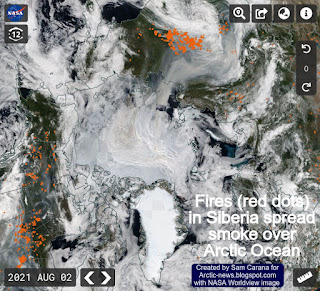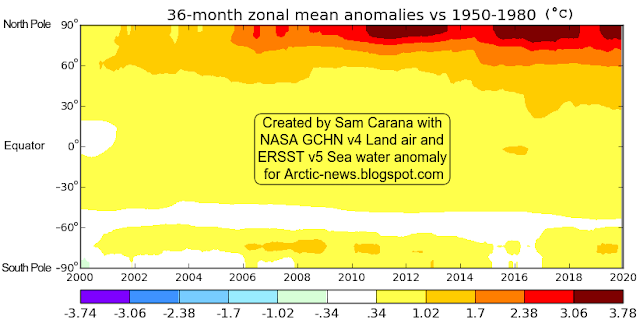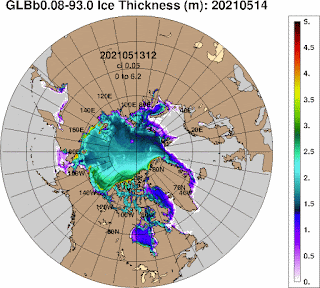 |
| [ from earlier post ] |
- The green trend is based on unadjusted NASA data (1951-1980 base).
- The lilac trend is based on data adjusted by 0.79°C for a 1750 base, for higher polar anomalies and for ocean air temperatures. The lilac trend shows that the 1.5°C threshold was already crossed when the Paris Agreement was adopted in 2015, while a 3°C could be crossed well before 2050.
- The red trend is based on data adjusted by 1.28°C, adding an extra 0.49°C to the lilac data for a 3480 BC base. The red trend shows that the 2°C threshold was already crossed when the Paris Agreement was adopted in 2015, while a 5°C anomaly could crossed by 2060.
Furthermore, the next El Niño could raise surface temperatures significantly. The image below indicates that the difference between the top of El Niño and the bottom of La Niña could be more than half a degree Celsius.
 |
| [ from earlier post ] |
Perhaps even more frightening is the situation regarding methane, as illustrated by the combination image below. The MetOp-2 satellite recorded some terrifying methane levels recently. On October 14, 2021 pm, a peak methane level of 4354 ppb was recorded at 293 mb (left panel), while a mean level of 2068 ppb was recorded at 367 mb (right panel). The images show only a partial cover of the globe, so there may be some problems with this satellite, yet it could be an ominous sign of things to come.
Meanwhile, NOAA has put up a notice that IASI data and products from Metop-A (MetOp-2) will no longer update and the satellite will be retired on November 15, 2021.
The magenta color indicates the highest methane levels. The animation shows that magenta-colored areas (with the highest levels) first show up over the Arctic Ocean, close to sea level. When rising up further toward the Tropopause, beyond what the animation shows, even more magenta shows up, with methane moving toward the Equator, as the Tropopause is higher closer to the Equator.
The image shows that the mean global methane level at this altitude was 1958 ppb. Very high methane levels show up over the high Arctic, as indicated by the magenta color. The image further shows the strong accumulation of methane at this altitude.
Links
• NASA GISS Surface Temperature Analysis (GISTEMP v4)
https://data.giss.nasa.gov/gistemp/
• Glasgow Climate Change Conference (COP26)
https://unfccc.int/process-and-meetings/conferences/glasgow-climate-change-conference
• IPCC special report on the impacts of global warming of 1.5 °C above pre-industrial levels and related global greenhouse gas emission pathways (SR1.5)
https://report.ipcc.ch/sr15/
• IPCC AR6
https://www.ipcc.ch/assessment-report/ar6/
• Paris Agreement, adopted 2015
https://unfccc.int/sites/default/files/resource/docs/2015/cop21/eng/l09r01.pdf
https://arctic-news.blogspot.com/2015/12/paris-agreement.html
• WMO - Greenhouse Gas Bulletin: Another Year Another Record
https://library.wmo.int/index.php?lvl=notice_display&id=21975
• MetOp satellites
https://www.ospo.noaa.gov/Products/atmosphere/soundings/iasi/
• Copernicus - methane
https://atmosphere.copernicus.eu/charts/cams/methane-forecasts
• September Temperature Update & COP 26 - 14 October 2021 - by James Hansen and Makiko Sato
https://www.nature.com/articles/s41586-020-2780-0
• NOAA Monthly Temperature Anomalies Versus El Niño
https://www.ncdc.noaa.gov/sotc/global/202109/supplemental/page-4
• Is the IPCC creating false perceptions, again?
• Feedbacks
https://arctic-news.blogspot.com/p/feedbacks.html
• Climate Plan
https://arctic-news.blogspot.com/p/climateplan.html



























































